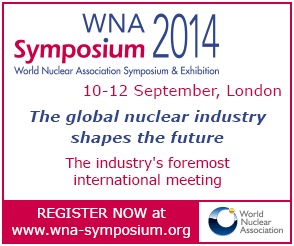This is Part 2 of my post about nuclear insurance issues. (see Part 1 posted on 9/19/14.) Part 1 discussed the current insurance situation and some of the related problems that were presented at the 2014 World Nuclear Association Symposium held in London. In this post, I am going to talk about some possible improvements in the global nuclear insurance industry.
The European Commission recently discussed the fact that current compensation limits are not realistic in view of the probable cost of a major nuclear accident. They also talked about a new system for nuclear accident compensation that would draw up to twenty billion dollars from a variety of sources to create a compensation pool.
The sources of money for the compensation pool would include the self insurance system currently in place in the United States. Additional funds would come from specialist insurance pools and mutual funds. And, finally, drawing funds from a whole new sector of the insurance market that is currently reluctant to get involved with nuclear accident compensation because of the problems with defining nuclear damage and prescription periods for payouts. One of the primary benefits of the proposed system would be to lower the burden the current system places on the taxpayer.
Drawing on this compensation pool of funds would be based on simple triggers that would release payments only in the case of a very serious nuclear accident. One possible trigger would be an event that rated above a level 5 on the International Nuclear and Radiological Event Scale. Another possible trigger would be the detection of certain levels of radiation around the site of an accident. The purpose of the triggers would be to remove current ambiguity about the type of events and situations that should result in compensation of victims.
The new system would not require that every operating nuclear reactor site have highest possible coverage. Individual insurance firms would be able to limit their exposure to only one or two triggering events. If fully implemented, the new insurance model should be obligatory to everyone in the nuclear industry. There has to be enough income from premiums in order to make it worthwhile for the insurance industry to make major financial commitments to the program.
This system of "risk transfer insurance" steps in with "distress funding" when a major unexpected event threatens the financial stability of a company. With this system in place, a nuclear power plant owner could focus on dealing with getting a nuclear accident under control without having to simultaneously worry about paying out compensation claims or figuring out how to secure future funding in light of losses association with the accident.
The bottom line is that a small premium of fractions of a penny per kilowatt hour could result in much greater financial security for the nuclear industry. As nuclear technology improves over time, the cost of the premium could be reduced. Given the virtual certainty of another major nuclear accident in the not too distant future, improving the system of insurance compensation for nuclear accidents victims would be a very good idea.
